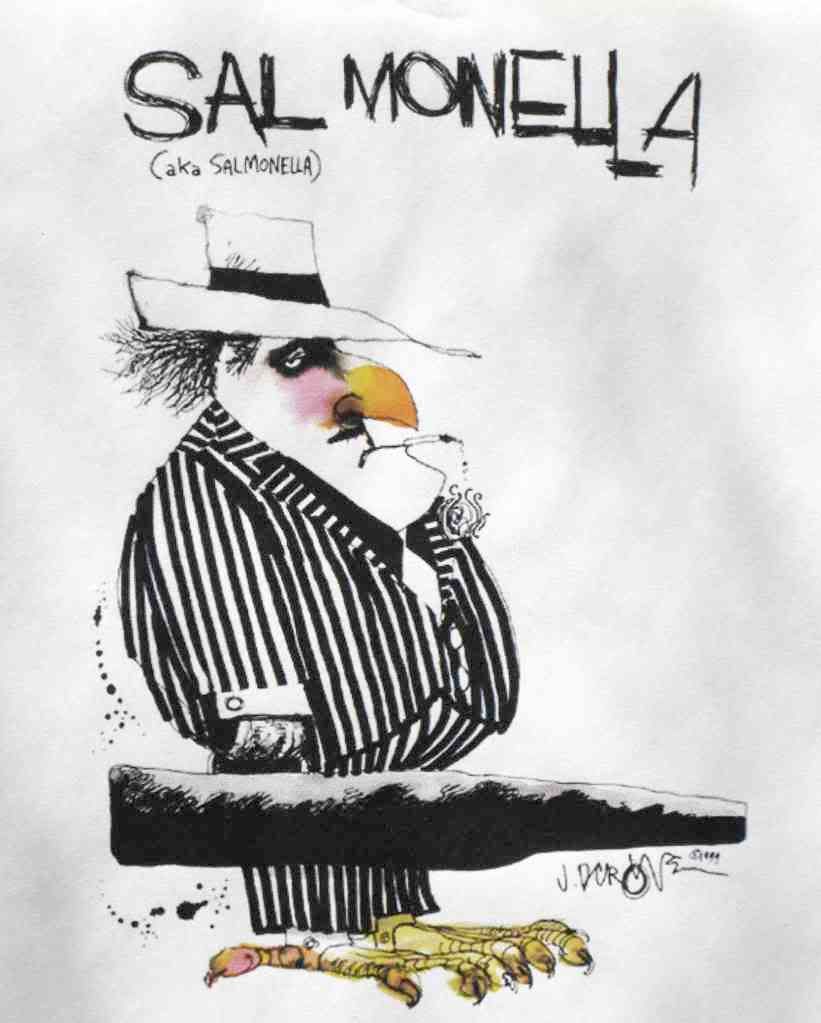 January 12, 2009
January 12, 2009The first recorded Salmonella outbreak to be linked to commercial peanut butter occurred in Australia in 1998. The peanut butter, which was contaminated with Salmonella Mbandaka, infected 15 individuals in South Australia. Roasted peanuts were implicated as the source of the contamination.
In 2001, contaminated "Asian style" peanuts were the culprit in an international outbreak of salmonellosis. Australia recorded more than 100 illnesses due to the imported peanuts; cases also were reported in Canada, Scotland, Wales and England. The peanuts were contaminated with several different types of Salmonella.
Peanut butter manufactured by ConAgra (Peter Pan and Great Value) was the source of a seven-month long Salmonella Tennessee outbreak that sickened at least 425 people in 44 US states during 2006/2007. ConAgra blamed the contamination on a leaky roof and faulty sprinklers.
And now, investigators are once more pointing the finger at peanut butter as the source of a national Salmonella outbreak. The Minnesota Departments of Health and Agriculture have presumptively identified King Nut brand peanut butter, manufactured by Peanut Corporation of America, as the culprit. The state expects confirming lab test results to be available early this week.
How does a shelf-stable, practically indestructible food such as peanut butter become a reservoir for Salmonella? To answer that question, we need to follow the progress of a batch of peanuts from farming the nuts to filling the jars.
Growing, harvesting and drying
The peanut flower is shy. After it blooms and wilts, the flower buries its head in the soil, where the peanut forms – underground. The nuts are harvested mechanically, and then mechanically dried.
Cleaning and storage
The peanuts, still in their shells, are cleaned mechanically. Some of the dirt and debris are removed using blowers; some is removed using mechanical filters, graders, and magnets. The raw peanuts are stored in silos and warehouses.
Shelling and grading
The peanuts are passed through a series of rollers to crack and separate the shells. The nuts are shaken, sieved and blown to separate the broken shells from the nuts. Next, the nuts are graded based on size, color, defects, spots and broken skin, and are transferred into bulk containers or sacks for shipment to peanut butter manufacturers.
Roasting, cooling and blanching
Nuts that are destined for peanut butter are dry roasted at temperatures that are more than adequate to kill Salmonella. After roasting, the nuts are air-cooled and passed through a gravity separator to remove any debris. Then they are blanched either by heat or water to remove the skin. Water-blanched nuts must be dried before mechanical screening and inspection; heat-blanched nuts proceed immediately to this step.
Grinding and packaging
Blanched nuts are fed into a grinder, along with other ingredients permitted under FDA's standard of identity for peanut butter – usually salt, hydrogenated oil and dextrose – and ground in two stages to obtain the desired consistency. The ground mixture – now peanut butter – feeds into a hopper for cooling and further mixing, before being automatically packed into jars.
There are several on-ramps by which Salmonella can gain access to the road that leads from harvest to hopper.
- The peanuts, which grow underground, may become contaminated during growth or harvest if Salmonella-infected animals gain access to the fields or if contaminated manure is used as fertilizer.
- Rodents and birds could gain access to the peanuts while they are stored in bulk silos or warehouses, and contaminate the nuts with their droppings.
- Dust generated during mechanical grading and cracking can spread from the "raw" side of a production operation to the "roasted" side, contaminating the roasted nuts.
- Rodent or bird infestation in the production facility.
- Poor equipment or building maintenance, as apparently happened in the ConAgra incident.
- One of the other ingredients – added to the peanuts during grinding – may be a source of contamination.
Regardless of how Salmonella enters the production environment, once there, it can be difficult to eliminate during routine cleaning and disinfection. A small amount of food debris or oil, – lodged in a small crevice or dead end of production equipment – can harbor Salmonella, shedding a few cells sporadically into the peanut butter as it passes the contaminated area.
Finding the source of the contamination in the production plant may be a tough nut to crack, but there's a good chance it will be found. Where the contaminant originated, and how long it's thought to have been lurking, will be a major determinant of the scope of any additional recalls.





No comments:
Post a Comment
Note: Only a member of this blog may post a comment.